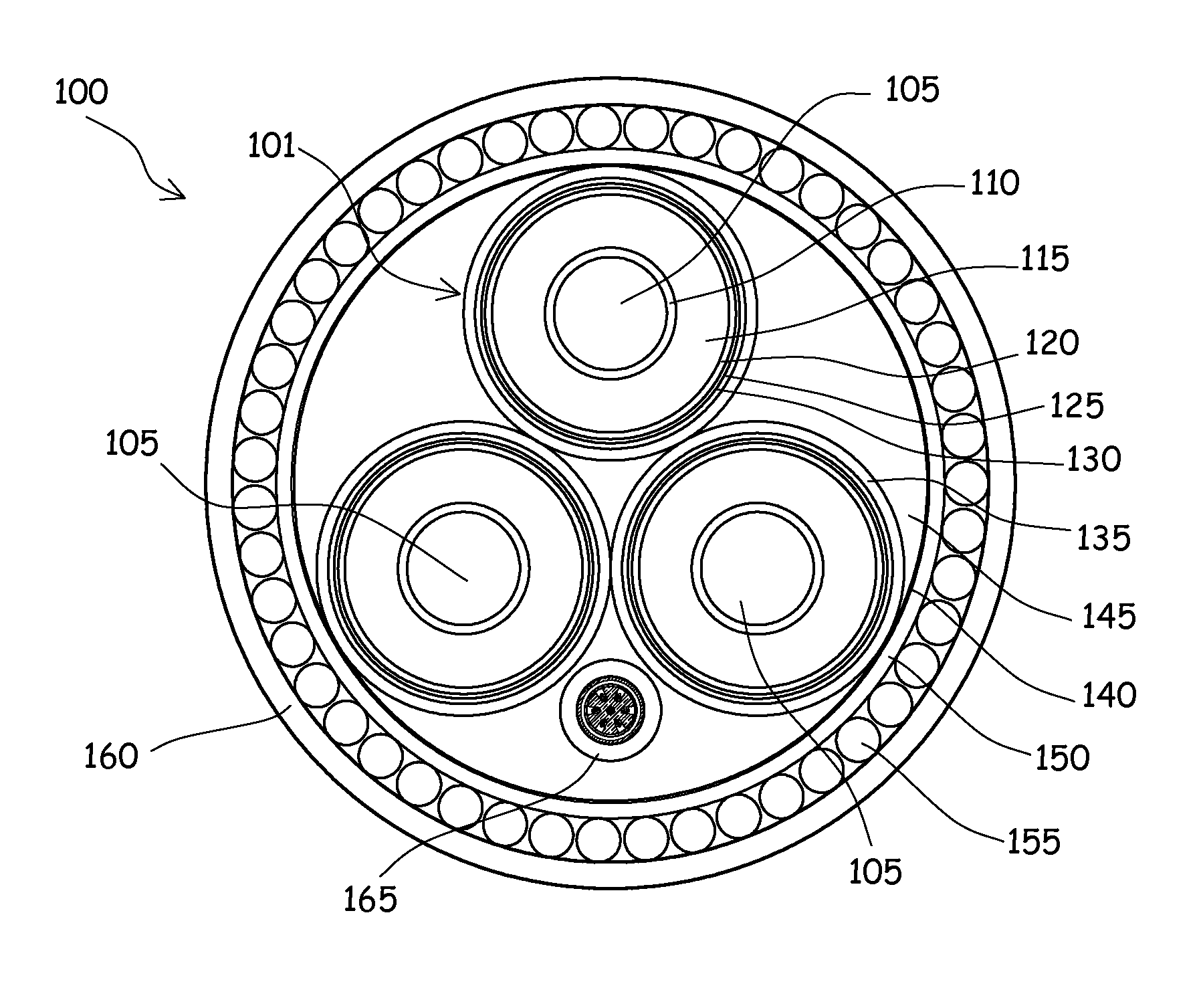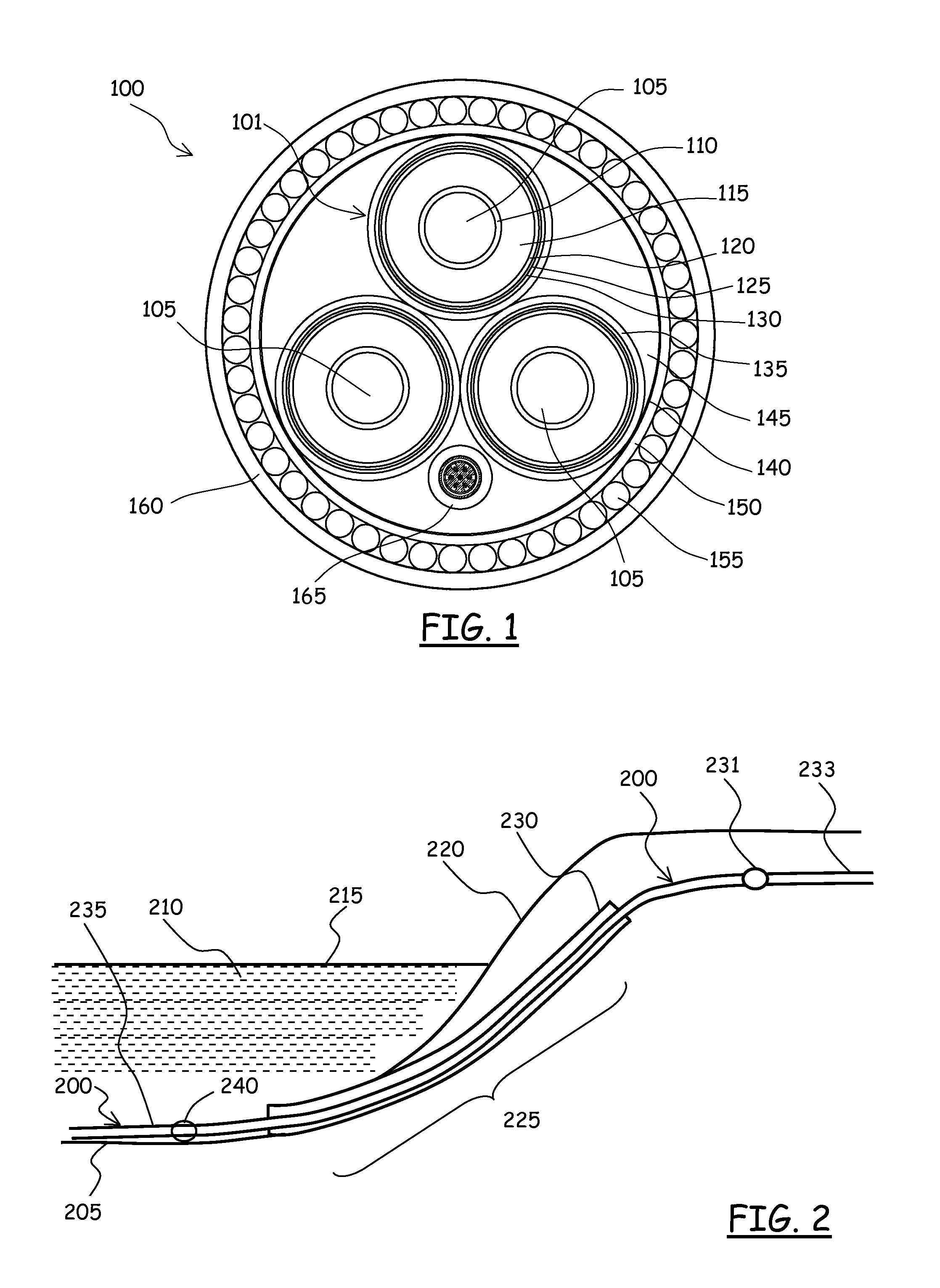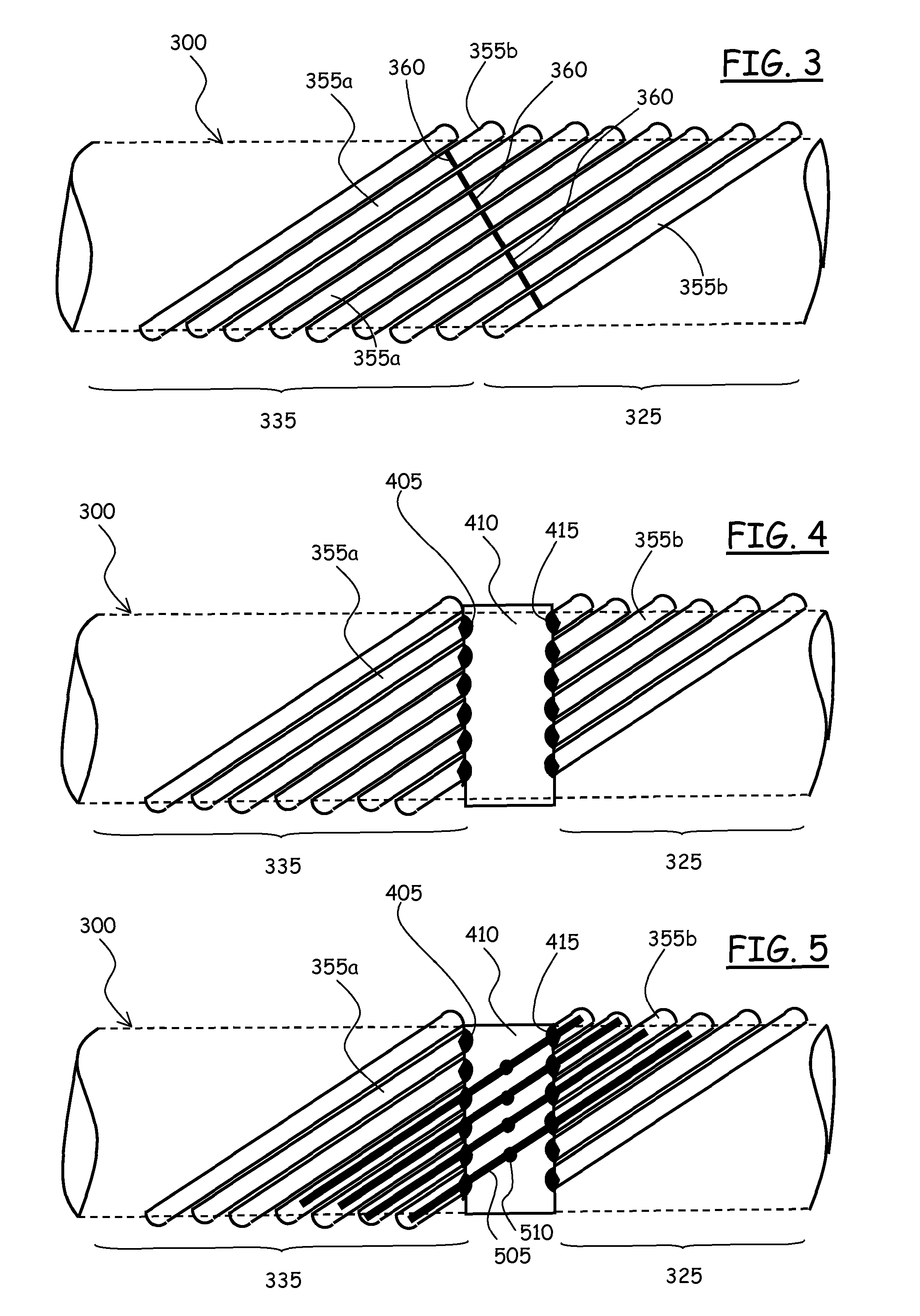Submarine electric power transmission cable armour transition
a technology of electric power transmission cable and armour, which is applied in the direction of power cables, cables, insulated conductors, etc., can solve the problems of permanent deterioration of electrical or mechanical properties of cables, magnetic field generated by current flowing in the conductor/s, friction and heat loss, etc., to avoid mechanical and electric problems and uniform mechanical and handling characteristics
- Summary
- Abstract
- Description
- Claims
- Application Information
AI Technical Summary
Benefits of technology
Problems solved by technology
Method used
Image
Examples
Embodiment Construction
[0056]Making reference to the drawings, in FIG. 1 there is schematically shown a cross-sectional view of an electrical cable 100, particularly a submarine cable for AC electrical power transmission in the MV or HV ranges.
[0057]The cable 100 is a multi-core cable adapted to 3-phases power transmission; the number of cores 101 in the cable is not a limitation for the present invention. Preferably, the invention applies to multi-core cables with any number of cores 101, but can advantageously be applied to a single core cable, too.
[0058]In the structure shown by FIG. 1, the cable 100 is a multi-core cable comprising three cores 101, each comprising a conductor 105, surrounded by a conductor screen 110, an insulation typically comprising an insulating layer 115 and an insulation screen 120, a water barrier layer 125, a metallic screen 130 and, optionally a polymeric sheath 135.
[0059]The insulating layer 115 may be an extruded insulating layer, for example made of cross-linked polyethyle...
PUM
| Property | Measurement | Unit |
|---|---|---|
| length | aaaaa | aaaaa |
| length | aaaaa | aaaaa |
| temperature | aaaaa | aaaaa |
Abstract
Description
Claims
Application Information
 Login to View More
Login to View More - R&D
- Intellectual Property
- Life Sciences
- Materials
- Tech Scout
- Unparalleled Data Quality
- Higher Quality Content
- 60% Fewer Hallucinations
Browse by: Latest US Patents, China's latest patents, Technical Efficacy Thesaurus, Application Domain, Technology Topic, Popular Technical Reports.
© 2025 PatSnap. All rights reserved.Legal|Privacy policy|Modern Slavery Act Transparency Statement|Sitemap|About US| Contact US: help@patsnap.com



